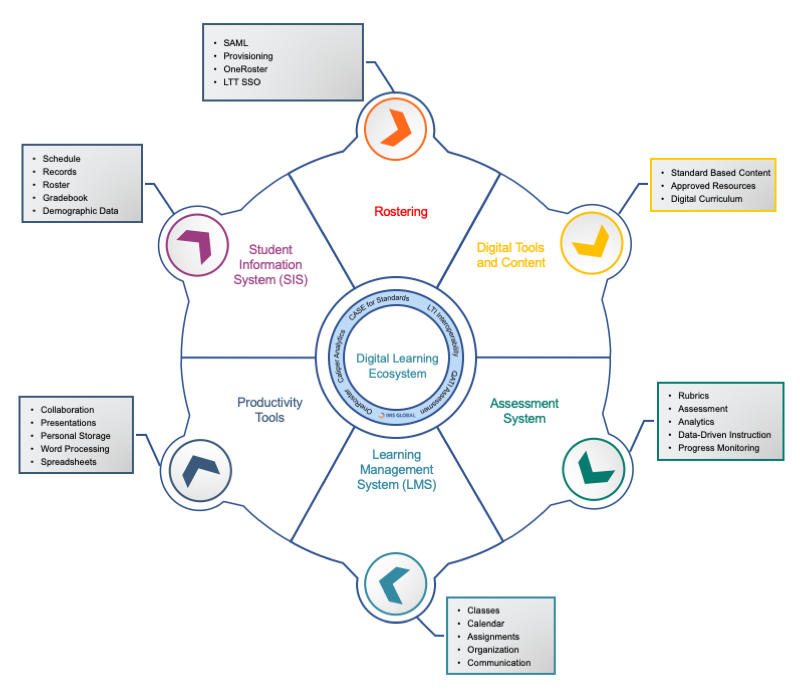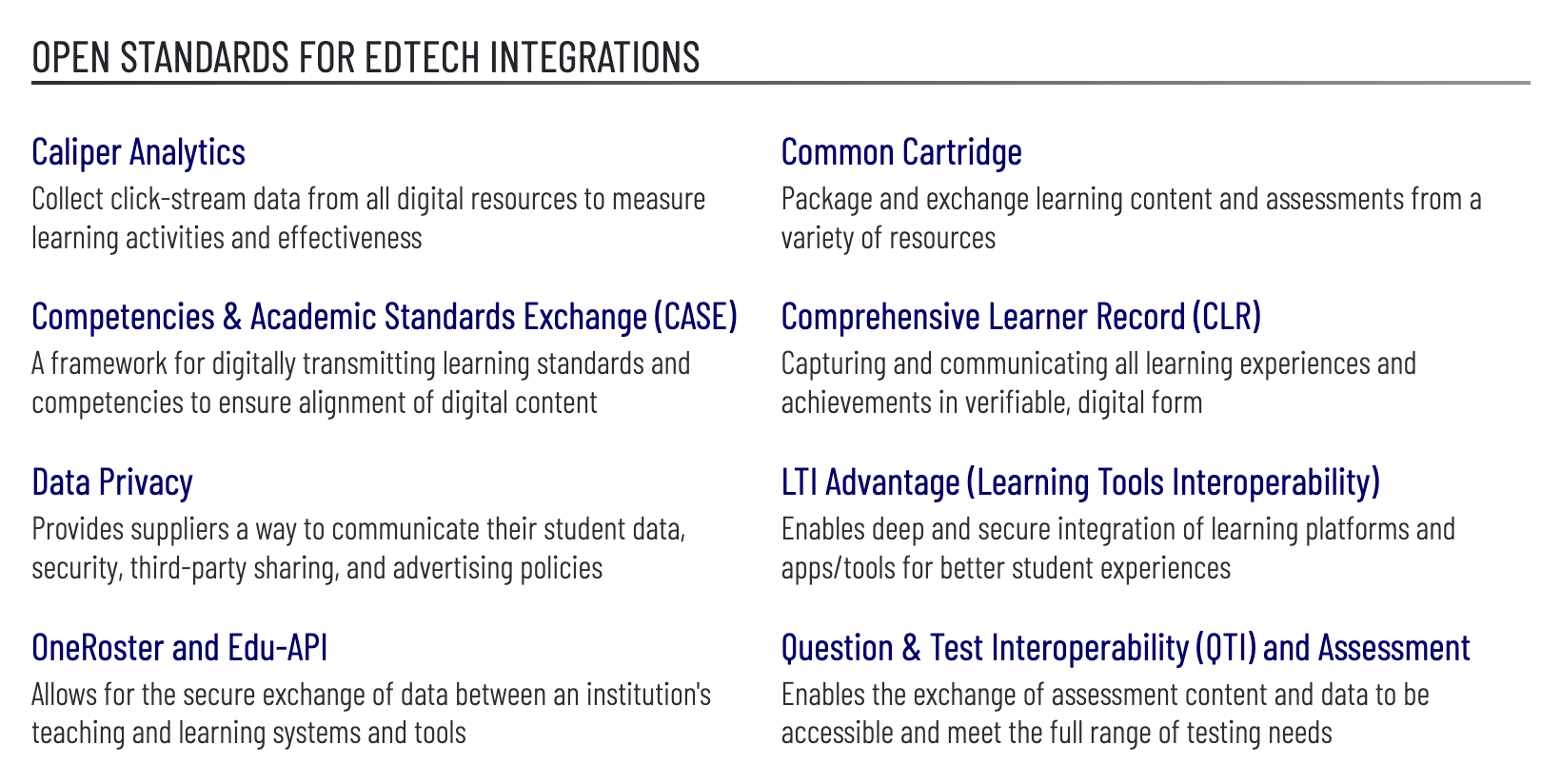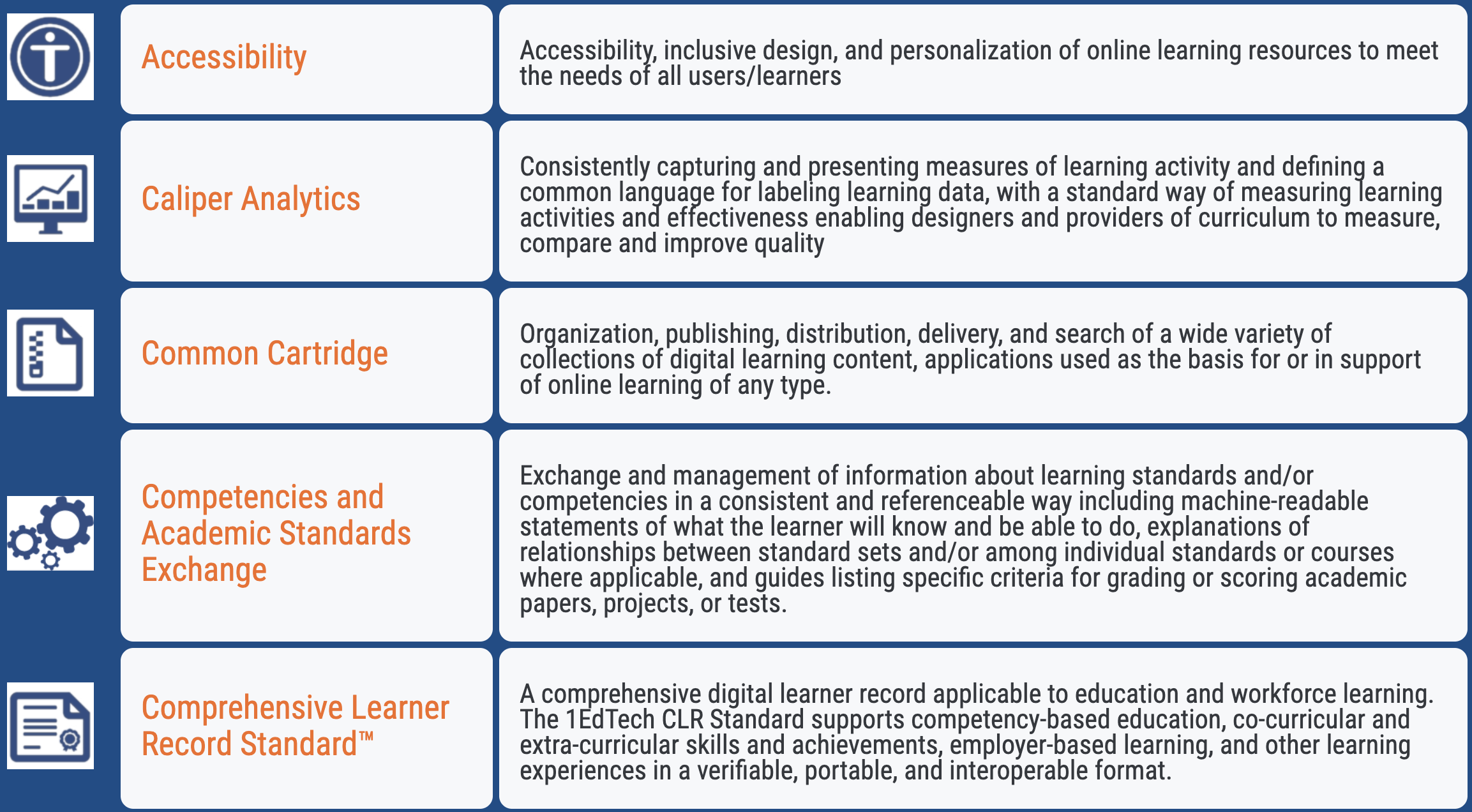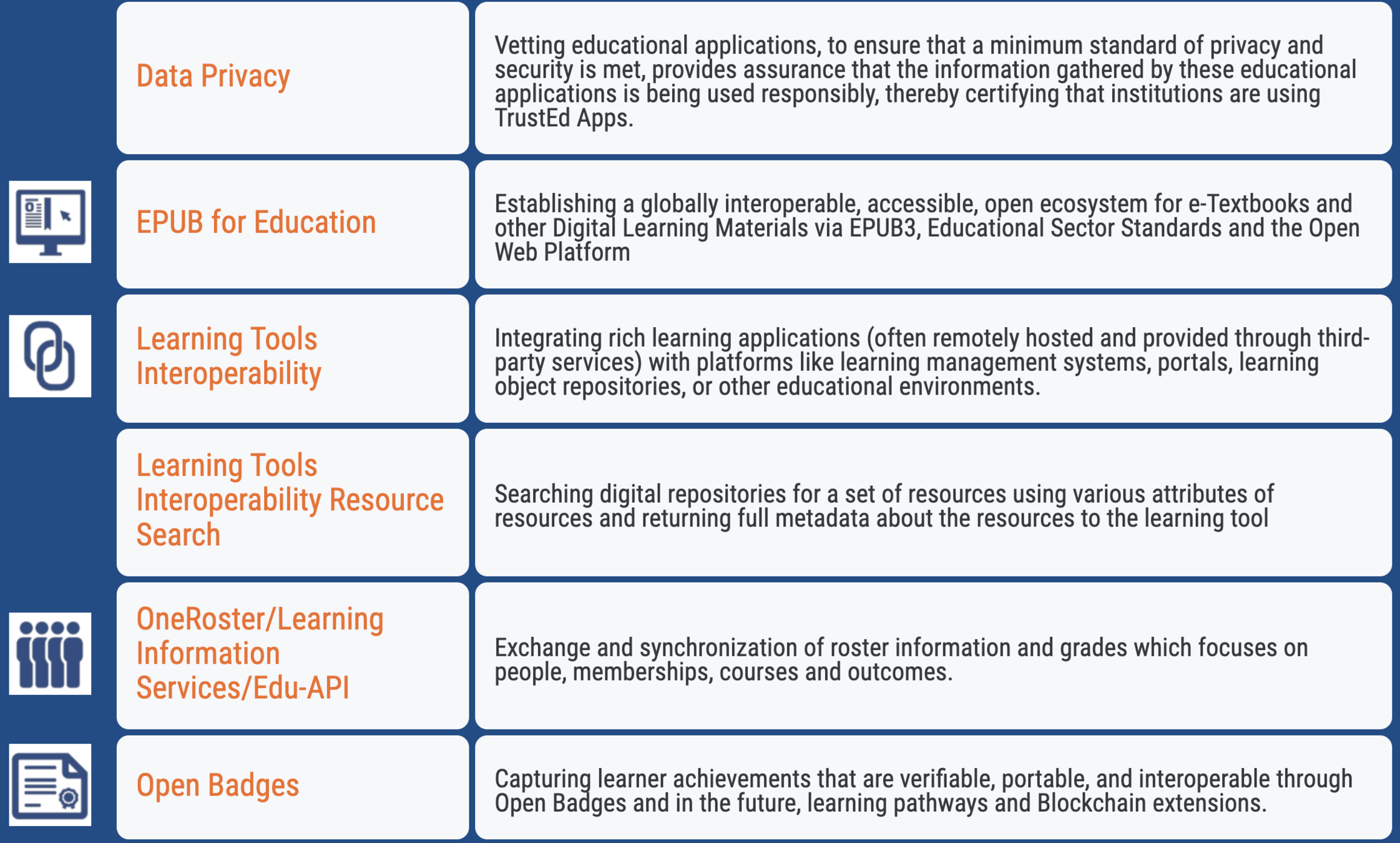EdTech Data Standards: What They Are & Why You Should Use Them
EdTech Data Standards: What They Are & Why You Should Use Them

Who Am I?
- Dennis Slade Jr.
dslade@scholastic.com
- 25+ years experience in web & desktop applications, software support, training, and management
- B.A. in Computer Science from Vassar College
- 30+ years providing tech support to Mom

In the beginning...

... There Was EdTech!
Educational Technology, or Edtech, can be defined as "the practice of introducing information and communication technology tools into the classroom to create more engaging, inclusive and individualized learning experiences."
While EdTech sometimes intersects with eCommerce, it usually does not. This is especially true for EdTech dealing directly with students and educational institutions.
Scholastic is a significant player in the EdTech industry, servicing hundreds of school districts and independent schools across the country and the world.
... There Was EdTech!
A prime consideration in EdTech is the security and interoperability of student data between classes, schools, districts, and EdTech providers like Scholastic.
Major laws like COPPA (U.S. Children's Online Privacy Protection Act), California's CCPA/CalOPPA, and the EU's GDPR (General Data Protection Regulation) continue to strengthen protections for student data - and complicate data handling for EdTech developers.
... There Was EdTech!
Interoperability is the ability of computer systems or software to exchange and make use of information. This information exchange can be between internal systems as well as between internal and external systems.
In EdTech there is a perpetual dance between easy interoperability of student data and the security of that data.
Pre-existing specifications which handle both interoperability and security are very valuable to schools and districts, which typically use dozens of systems to track student personal data and assessments.
So where are we going with this?

Welcome to STS?

Meanwhile In the Outside World...

Meanwhile In the Outside World...
What unites the previous two slides? Why are they two sides of the same coin?

Communication problems
Standards to the Rescue
EdTech customers and providers are increasingly using standard APIs and data formats to ease interoperability/communications between their systems.
Internally we have dozens of systems communicating with one another but few have adopted standard APIs and data formats. This slows down development internally, and can be a factor when customers request interoperability with newly developed systems.
Scholastic is at a competitive disadvantage when our systems do not adhere to any standards.
For over 20 years the 1EdTech Consortium (formerly known as IMS Global) has brought together educational providers, state/national governmental departments of education and tech companies in an effort to standardize every aspect of the EdTech ecosystem.
This ecosystem includes all corners of the digital curriculum from basic student/teacher data to school organization and calendaring, rostering, digital credentialing, assignments, assessments, content discovery, and more.
Standards to the Rescue
- Better interoperability and security with vendors and customers (school districts)
- Broaden the capabilities and offerings of our enterprise
applications - to both internal applications as well as vendors and customers
- Decrease development time and onboarding
- Attract employees more experienced in EdTech
- Opportunties for connection to (and leadership in) the outside EdTech world
Overall Reasons to Adopt Standards
Focusing specifically on APIs...
Our development teams frequently need to create and expose new APIs, and so often they find themselves "reinventing the wheel", spending significant amounts of time trying to figure out interfaces and their underlying schema.
Adopting standards that are already published, comprehensively documented, and industry peer-reviewed can significantly reduce the time needed to implement and expose new APIs.
Overall Reasons to Adopt Standards
1EdTech Standards

1EdTech Standards

1EdTech Standards

1EdTech Standards

Learning Tool Interoperability (LTI) 1.0 to securely launch SDM-enabled applications
OneRoster 1.0 (CSV format) used to extract school, teacher, and student data from ClassLink-enabled customers
What Do We Use Now?
OneRoster APIs: To pass school, teacher, and student data between all internal applications in a standard way
OneRoster APIs: To extract school, teacher, and student data from customer and suppliers in real-time
LTI Advantage (1.3): To receive student roster data from supplier systems at launch time, and to support standard deep linking
Accessibility: To meet legal accessibility requirements in many jurisdictions in a less ad-hoc manner
What Could We Be Using?
Common Cartridge and LTI Resource Search: For a common implementation of deep linking and search across all our applications
QTI 3 and Assessment: To ease interoperability of test and results data between our authoring tools and assessment delivery systems
EPUB for Education: To standardize book content across all our applications
What Could We Be Using?
Read up on 1EdTech at 1edtech.org or jump directly to the standards definitions at imsglobal.org/node/701
Check out videos on 1EdTech's YouTube channel
Consider attending the annual Learning Impact Conference
How do you begin?
Q & A



Thanks for listening!
Dennis Slade Jr.
• Mail: dslade@scholastic.com
• Twitter: @DennisSladeJr
This presentation on Slides.com:


EdTech Data Standards: What They Are & Why You Should Use Them
By Dennis Slade Jr.
EdTech Data Standards: What They Are & Why You Should Use Them
Enterprise developers frequently need to come up with APIs for applications and we find ourselves "reinventing the wheel" more often than not. However, in educational technology, comprehensive data standards already exist which can be used to quickly craft those APIs and the database schemas underpinning them. Using standards like 1EdTech's LTI and OneRoster can significantly reduce the time needed to design, implement, and document your APIs. There are other advantages in the developer onboarding and customer interoperability realms, as well. Come find out about these standards and how you can use them to decrease development time and to broaden the capabilities of your enterprise applications.
- 155



